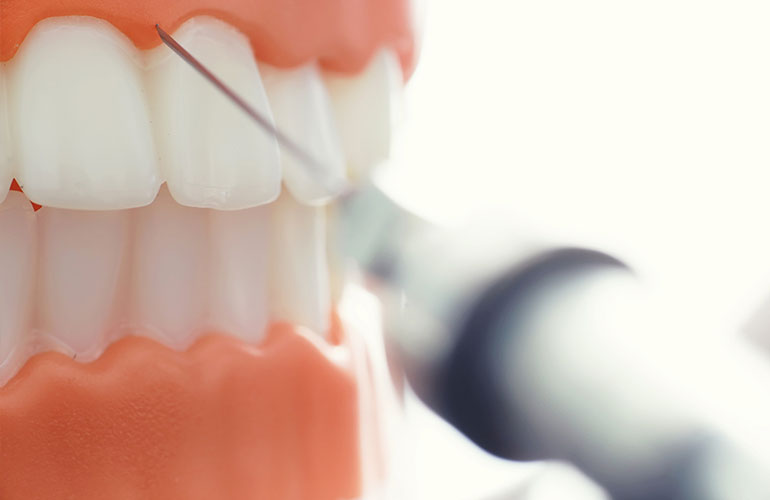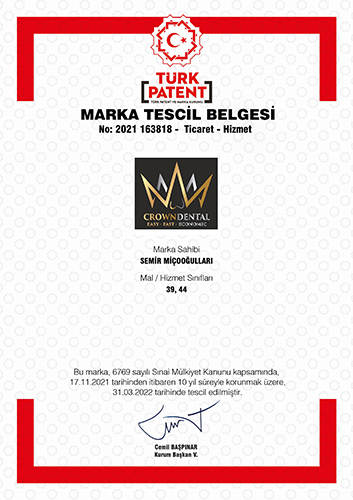Bone restorations are surgical procedures applied to repair the patient’s jawbone or to compensate for insufficient bone.
In cases of periodontitis, lack of teeth and similar, the bone becomes thinner. This reduces the success rate of the implant . Before placing an implant , a bone graft is needed. In this way, the volume losses in the bone are eliminated. Thus, it is ensured that the jawbone is hard, dense and durable at the desired level.
Bone mass is reconstructed during bone restoration. In order for patients to have healthy implant -supported teeth, the implant should be surrounded by a bone of at least one mm in height.
Here, thanks to bone restoration, the bone is brought back to its normal level. These treatments, also known as bone augmentation , are especially applied in patients who have been edentulous for many years, in those with a history of traumatic tooth extraction, and in elderly individuals.
What Does Bone Restoration Do?
Treatments applied to people who do not have enough bone tissue are called bone expansion / augmentation. This method, which is frequently used in patients who need chin aesthetics or implant application, corrects problems related to problems such as collapse and melting of the jawbone.
implants to be long-lasting, there must be a dense bone around it to support it.
Patients who do not have enough bone tissue vertically or horizontally are provided with bone restoration to meet the implantation criteria.
implant to be used for a longer time, also improves chewing function.
The weak bone structure is strengthened, the missing bone is compensated. Thus, the efficiency of the operation is increased, more aesthetic and successful results can be achieved.
When Is Bone Restoration Performed?
Whether the bone is at the appropriate volume and height is determined by panoramic x-ray. The x-ray taken is measured by special software programs and it is decided whether the bone is suitable for implantation .
Sometimes dental volumetric tomography is used to make 3D measurements. If the bone size and density are insufficient, bone restoration is applied.
How Is Bone Restoration Applied?
In this treatment, various materials are preferred to replace the bone. Bone powder is one of them.
Bone powders obtained from nature (animal) or synthetically produced in the form of small particles are fixed with biocompatible synthetic membranes .
It is not necessary to remove the membranes . Because these structures are absorbable and self-dissolving. Bone is separated from connective tissue with the help of membranes . Thus, it becomes possible for the bone powders used to form new bone.
This procedure is the most commonly applied bone augmentation method in case of several missing teeth. After the bone powders are used, the implant can be placed in the same session.
Sometimes, a bone in the patient’s mouth can also be used to obtain new bone. This is called ‘ autogenous bone’ and works better than artificial bone powders.
Sometimes the shinbone or hip bone can also be used for the operation. The granular or blocky bone taken from these areas is subjected to various processes for restoration.
In cases where the entire jawbone is very thin or in edentulous patients , the hip bone is taken for bone grafting . The obtained graft is thickened and placed in the chin.
In cases where the entire jaw is edentulous or partial edentulism, bone deficiency is eliminated by block bone transplantation.
If such an operation is to be performed, bone formation should be expected for at least 6 months before implantation . The waiting period after the implant is 3 months. In other words, the duration of treatment is 9 months in total.
Other Bone Restoration Methods
- Box Technique : It is applied with thermoplastic molding and artificial bone materials.
- Sinus Lifting : In this treatment, the patient’s sinus floor is elevated. If there is no bone in the posterior region of the upper jaw, bone formation is performed in the vertical direction with this application technique.
- split Osteotome : This method is called the ‘sandwich technique’. If the bone thickness is insufficient, the bone is opened and the implant is placed here.
Measures to be Taken After Bone Restoration
- After the bone transplant, you will be asked to keep the tampons in your mouth for 20 minutes.
- You should make ice compresses at 10-minute intervals and continue this for 48 hours.
- You should be careful not to open your mouth too much against the risk of damaging the stitches.
- You can start eating and drinking after the effect of anesthesia wears off. But you should stay away from things that are hard or extremely cold or very hot.
- You should gargle with salt 3-4 times a day.
- You should avoid forcing the area where the bone graft is applied, and you should be careful not to apply force there.
- You should use the medicines given by your doctor regularly.





